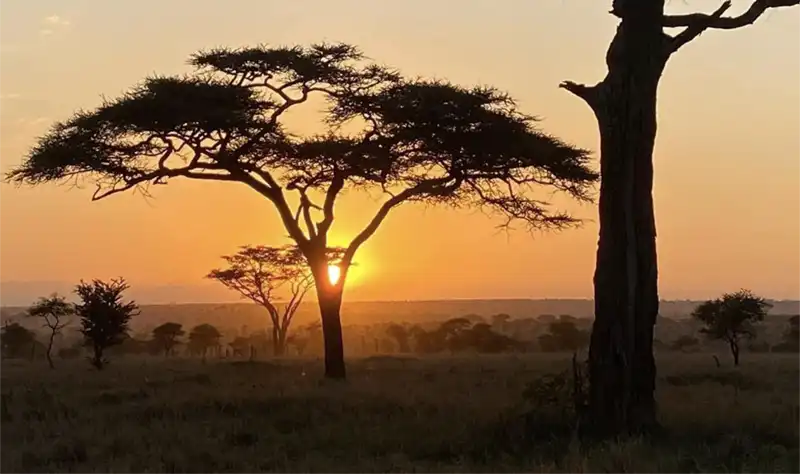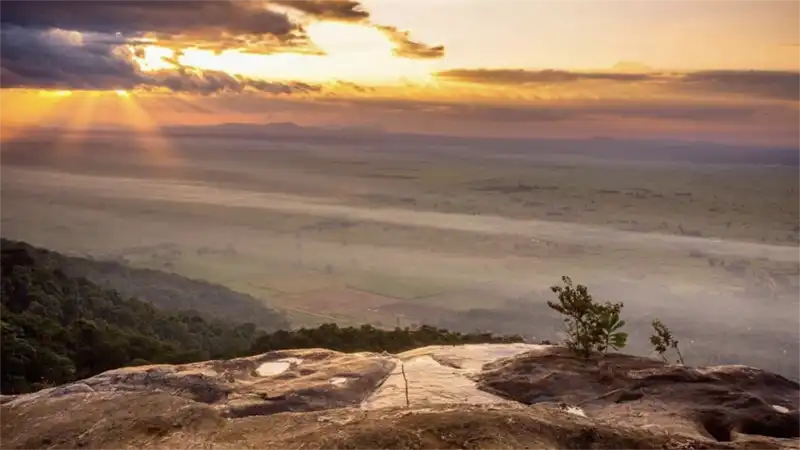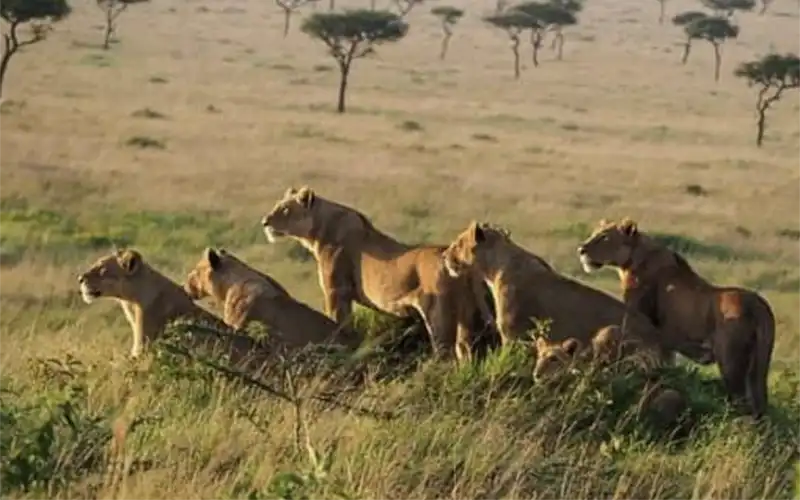Best Time to Visit Tanzania for a Road Trip
The best time for a road trip to Tanzania is during the dry season from June to October. Here are five reasons why:
- Optimal Weather Conditions: The dry season offers pleasant weather with minimal rainfall, clear skies, and good visibility for scenic drives and outdoor activities.
- Prime Wildlife Viewing: Wildlife congregates around water sources, making it an excellent time for safaris. The famous Great Migration in the Serengeti and other wildlife sightings are during this time.
- Accessibility to Remote Areas: Reduced rainfall makes roads more accessible, allowing exploration of remote or off-the-beaten-path destinations, enhancing the road trip experience.
- Comfortable Climate for Camping: Cooler and drier weather during the dry season is ideal for camping, providing more comfort for outdoor accommodations.
- Cultural and Outdoor Activities: Alongside wildlife experiences, the dry season allows for participation in various cultural events, hiking in the Ngorongoro Highlands, visiting local markets, and engaging with indigenous communities.
However, Tanzania's climate can vary by region, so it's essential to consider specific interests and desired activities when planning a road trip.
Importance of a 4x4 Vehicle for Visiting Game Parks in Tanzania
Having a 4x4 vehicle is highly recommended, if not essential, for visiting game parks in Tanzania:
- Rough Terrain: Many of Tanzania's game parks and reserves feature rough and unpaved roads. A 4x4 vehicle with good ground clearance and sturdy tires can navigate these uneven terrains, providing better stability and reducing the risk of getting stuck.
- Access to Remote Areas: A 4x4 vehicle offers the capability to venture into remote and less-traveled regions, increasing the chances of spotting wildlife away from crowded tourist routes.
- Wildlife Viewing: A 4x4 vehicle enables visitors to approach wildlife sightings more closely and navigate closer to animals in their natural habitats without disturbing them.
- Adverse Weather Conditions: During the wet season, a 4x4 vehicle equipped with all-wheel drive provides better traction and control in muddy and slippery conditions.
- Self-Reliance and Safety: A 4x4 vehicle ensures self-reliance and safety in remote areas, allowing travelers to handle unexpected situations more effectively.
- Comfort and Convenience: Besides practicality, a 4x4 vehicle offers a more comfortable ride, especially during long journeys within the parks.
Overall, a 4x4 vehicle is highly recommended for visitors planning to explore Tanzania's game parks due to its capabilities in handling diverse terrains, enhancing wildlife viewing opportunities, and ensuring a safer and more comfortable experience within these natural habitats.

Top Tips for Visiting Tanzania in a 4x4 Camper
- Plan Ahead: Research and plan your route, including stops, accommodations, and attractions along the way.
- Choose the Right Vehicle: Ensure your 4x4 camper is well-maintained and suitable for off-road conditions.
- Obtain Necessary Permits and Documentation: Secure required permits, visas, and vehicle insurance before your trip. If you are intending to travel out of Tanzania and return you need to make sure you have all the right documents and inform us of your plans so we can let the supplier know and make preparations.
- Pack Essentials: Carry sufficient supplies, including water, food, camping gear, first aid kit, spare parts, and navigation tools. Always refuel when you have the opportunity.
- Respect Wildlife: Maintain a safe distance from animals, follow park rules, and refrain from disturbing the natural habitat.
- Stay Informed: Keep updated on weather forecasts, road conditions, and park regulations during your journey.
- Practice Safe Driving: Drive cautiously, especially on unpaved roads, and be aware of wildlife crossings.
- Camp Responsibly: Use designated campsites, respect the environment, and dispose of waste properly.
- Engage with Locals: Interact with local communities respectfully, learn about their culture, and follow local customs.
- Carry a reliable communication device: Cell phone coverage can be limited in some areas, so consider investing in a satellite phone or two-way radio for emergencies.
- Learn basic Swahili phrases: Learning a few Swahili phrases will enhance your interactions with locals and enrich your travel experience. Basic greetings, directions, and phrases for common needs can go a long way.
- Be mindful of cultural sensitivities: Dress modestly, respect local customs and traditions, and always ask permission before taking photos of people or sacred sites.
- Stay Flexible: Embrace spontaneity and adapt to unforeseen situations or changes in your itinerary.
Following these tips can enhance your road trip experience in Tanzania, ensuring a safe, enjoyable, and memorable adventure in your 4x4 camper.
14-Day Tanzanian Adventure Itinerary
Day 1-2: Dar es Salaam to Mikumi National Park
Distance: Approximately 180 miles (290 km)
Driving Time: Around 4-5 hours
Stay: Camp at Mikumi Wildlife Camp or Foxes Safari Camp
Day 3-4: Mikumi to Iringa (Ruaha National Park optional detour)
Optional Detour: Visit Ruaha National Park
Distance (including detour): Approximately 330 miles (530 km)
Driving Time: Around 7-8 hours
Stay: Camp at Old Farm House or Riverside Campsite in Iringa
Day 5-6: Iringa to Mbeya (via Udzungwa Mountains)
Day 5: Explore Udzungwa Mountains National Park
Distance: Approximately 250 miles (400 km) to Mbeya (including detour)
Driving Time: Around 6-7 hours
Stay: Camp at Utengule Coffee Lodge or Mbeya Peak Hotel
Day 7-8: Mbeya to Kitulo Plateau National Park
Day 7: Drive to Kitulo Plateau National Park
Distance: Approximately 120 miles (190 km)
Driving Time: Around 4-5 hours
Stay: Camp in the park (basic camping facilities available)
Day 9-10: Kitulo to Morogoro (via Mikumi for wildlife spotting)
Day 9: Return to Mikumi for additional wildlife viewing
Distance (return): Approximately 120 miles (190 km)
Driving Time: Around 3-4 hours
Stay: Camp at Morogoro Hotel or Riverside Campsite
Day 11-12: Morogoro to Pugu Hills Nature Reserve (Day trip to Dar es Salaam)
Day 11: Explore Pugu Hills for birdwatching and hiking
Distance (to Dar es Salaam): Approximately 30 miles (50 km)
Driving Time: Around 1 hour each way
Stay: Camp at designated spots in Pugu Hills
Day 13-14: Pugu Hills to Saadani National Park (coastal route)
Distance: Approximately 100 miles (160 km)
Driving Time: Around 3-4 hours
Stay: Camp at Saadani Safari Lodge or Marumbi Beach Campsite
Top Tips for Safety and Adventure:
- Vehicle Maintenance: Ensure the 4x4 camper is in excellent condition for off-road travel.
- Navigation and Maps: Carry detailed maps or GPS for navigation in remote areas.
- Safety Precautions: Respect wildlife and local customs. Avoid solo exploring in unfamiliar regions.
- Water and Supplies: Stock up on water and essentials before remote stretches.
- Emergency Contacts: Keep emergency contacts and a first aid kit handy.

Useful Links to help you plan your Tanzania Road Trip:
- Tanzania National Parks
- Tanzania Tourist Board
- Tracks4Africa (for detailed maps and travel information)
5-Day Serengeti Adventure Itinerary
Distances and Driving Times:
- Day 1: No significant driving
- Day 2: Explore Serengeti (Varied routes, approximately 50-100 mi / 80-160 km per day)
- Day 3: Continue exploring Serengeti (Varied routes, approximately 50-100 mi / 80-160 km per day)
- Day 4: Hot air balloon safari area (Varied routes, approximately 50-100 mi / 80-160 km per day)
- Day 5: Departure (Varied routes, approximately 50-100 mi / 80-160 km)
Day 1: Arrival in Serengeti National Park
Arrive at Serengeti National Park
Stay: Camp at a designated site within Serengeti National Park
Day 2-3: Explore Serengeti National Park
Game drives to explore the wildlife, including the Great Migration
Stay: Camp within Serengeti National Park
Day 4: Serengeti Hot Air Balloon Safari
Experience a breathtaking hot air balloon safari at dawn
Stay: Camp within Serengeti National Park
Day 5: Departure from Serengeti
Final game drive and departure from Serengeti National Park
Stay: Departure from the park
Top Tips for the Serengeti Adventure:
- Book hot air balloon safari in advance
- Observe wildlife from a safe distance
- Carry binoculars and a camera for wildlife viewing
- Respect park rules and guidelines
- Stay hydrated and carry essentials during game drives
Useful Links for Serengeti:

Best Viewing Points for the Great Migration in Serengeti
The Serengeti offers various viewpoints to witness the Great Migration, one of the world's most impressive wildlife spectacles:
-
Western Corridor (May - July): During this period, the migration typically moves through the Western Corridor.
- Grumeti River Camps: Nestled along the banks of the Grumeti River, these camps offer front-row seats to the thrilling river crossings during the early stages of the migration.
- Kirawira Serena Camp: Perched atop a kopje, this camp provides panoramic views of the Grumeti River and the surrounding plains, allowing you to witness the vast herds as they traverse the landscape.
-
Northern Serengeti (July - September): The migration often reaches the northern region near the Mara River.
- Sayari Camp: This exclusive camp offers intimate encounters with the migrating herds as they venture into the northern Serengeti.
- Kogatende Area: Known for its dramatic river crossings, the Kogatende area provides ample opportunities to witness the wildebeest plunging into the Mara River, braving crocodiles and creating a spectacle of nature.
-
Lamai Wedge (July - October): Located in a secluded corner of the Lamai Wedge.
- Lamai Serengeti: This camp offers tranquil surroundings and prime viewing spots for the migration.
- Nomad Lamai: Embracing a mobile concept, Nomad Lamai follows the migration, ensuring you're always in the heart of the action.
-
Central Serengeti (November - April): As the herds move southwards during the wet season.
- Seronera River Valley: This lush area is home to a variety of resident wildlife, offering a well-rounded safari experience during the wet season.
- Serengeti Sopa Lodge: Perched atop a kopje, this lodge provides stunning views of the Serengeti plains and the resident wildlife.
-
Ndutu Area (December - March): Situated in the heart of the calving grounds.
- Ndutu Safari Lodge: This lodge offers the chance to witness the birthing season and the intense predator-prey interactions.
- Ndutu Migration Camp: This mobile camp moves along with the migration, ensuring you're always close to the action.
When planning a visit to witness the Great Migration, consider the timing based on the movement of the herds and their location within the Serengeti. Different areas offer unique perspectives during various times of the year, so researching the migration patterns before your visit can enhance the chances of witnessing this extraordinary natural event.
Please note conditions change and campsites close. Please check and pre-book before you go.
Need help or have a question?
It's easy to talk over what you are looking for in a campervan hire when our office is open 24 hours a day and our phone calls are free or at local rates.
Customer SupportSpecial Offers and Deals
Check out our hottest deals on Campervan, RV and 4x4 Campers, everywhere from Australia to Zimbabwe.
See Deals